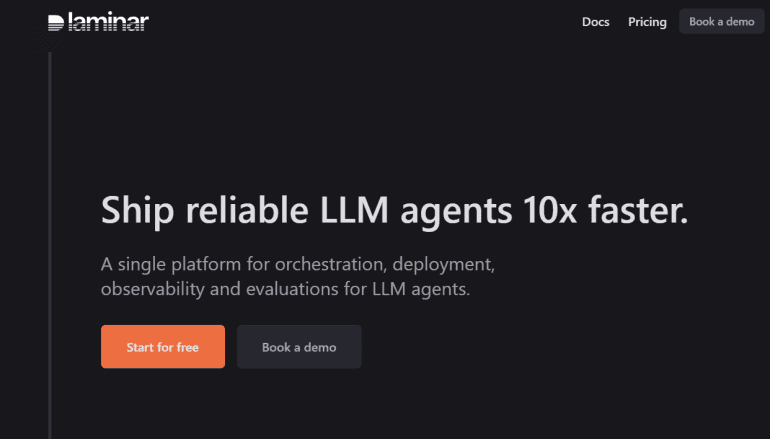- Laminar AI integrates orchestration, evaluation, data management, and observability to streamline LLM development.
- The platform’s GUI allows for dynamic graph-based application development with direct local code integration.
- Open-source packages can be easily imported, bypassing complex abstractions.
- It features robust data infrastructure for vector search and an advanced evaluation platform for creating unique evaluators.
- A self-improving data flywheel enhances LLMs with seamless data integration and real-time updates.
- The IDE supports constructing LLM applications as dynamic graphs and integrates smoothly with local code execution.
- Customizable evaluation pipelines can be built and managed without handling infrastructure.
- Users benefit from a low-latency logging system and asynchronous log writing to minimize latency overhead.
Main AI News:
In the world of LLMs, where inherent randomness demands rigorous monitoring and swift iteration, Laminar AI emerges as a game-changer. By seamlessly integrating orchestration, evaluation, data management, and observability, Laminar AI enables developers to deliver reliable LLM applications up to ten times faster than traditional methods.
The platform’s graphical user interface (GUI) transforms LLM application development into a dynamic graph-based process, directly interfacing with local code. Developers can instantly incorporate open-source packages that auto-generate code, bypassing the need for complex abstractions. Laminar AI’s robust data infrastructure supports vector search across extensive datasets and files, while its state-of-the-art evaluation platform allows for rapid creation of unique evaluators without the burden of managing the evaluation infrastructure.
Laminar AI’s architecture supports a self-improving data flywheel, enhancing LLMs by integrating data seamlessly and facilitating real-time updates. The platform features a low-latency logging system and a cutting-edge IDE for constructing LLM applications as dynamic graphs. The integration between graphs and local code is streamlined, enabling easy access to server-side functions via the user interface or SDK. This results in a transformative approach to testing LLM agents, with pure function code management and a highly efficient proprietary async engine built in Rust for scalable API deployment.
Developers benefit from customizable evaluation pipelines, constructed with the laminar pipeline builder, allowing for easy adaptation to complex application-specific needs. The platform supports simultaneous evaluations on thousands of data points and real-time run statistics, all while managing evaluation infrastructure effortlessly. Whether hosting LLM pipelines or generating code from graphs, users can leverage the intuitive UI to analyze trace logs and endpoint requests, with asynchronous log writing to minimize latency overhead.
Key Features:
- Comprehensive semantic search and management of datasets, including vector databases and embeddings.
- Full access to Python’s standard libraries with unique coding capabilities.
- Versatile model selection, including GPT-4o, Claude, Llama3, and others.
- Collaborative pipeline creation and testing, akin to tools like Figma.
- Seamless integration of graph logic with local code execution, including local function calls.
- An intuitive interface for constructing and debugging agents with extensive local function integration.
Conclusion:
Laminar AI’s platform represents a significant advancement in the LLM development landscape by significantly reducing development time and complexity. By integrating multiple aspects of LLM development into a unified platform, Laminar AI enables developers to rapidly create and deploy reliable applications. This efficiency not only accelerates time-to-market but also reduces overhead related to infrastructure management and code integration. As a result, Laminar AI could become a key player in the AI development market, setting new standards for speed and reliability in LLM applications and potentially influencing other platforms to adopt similar integrated approaches.

